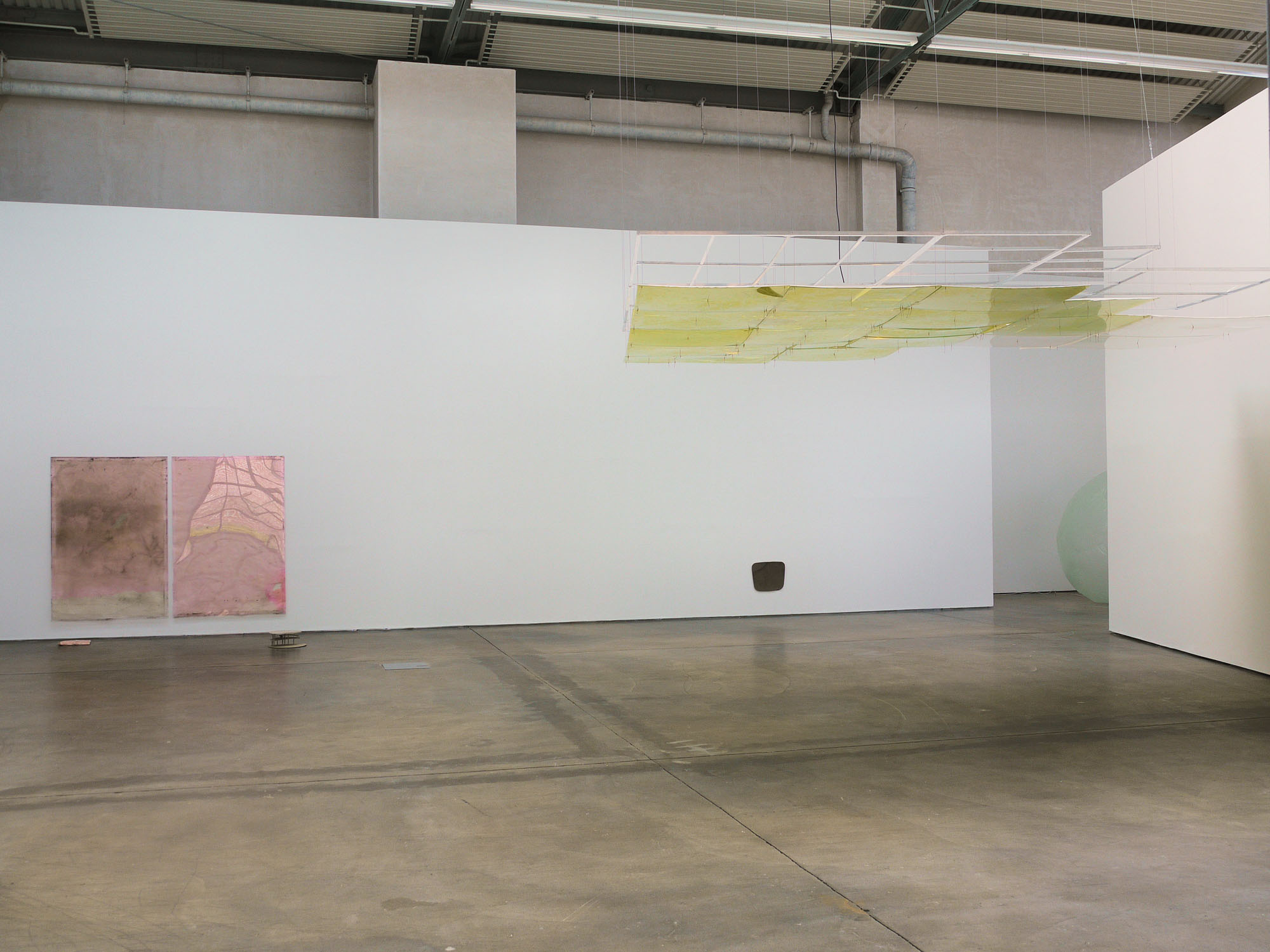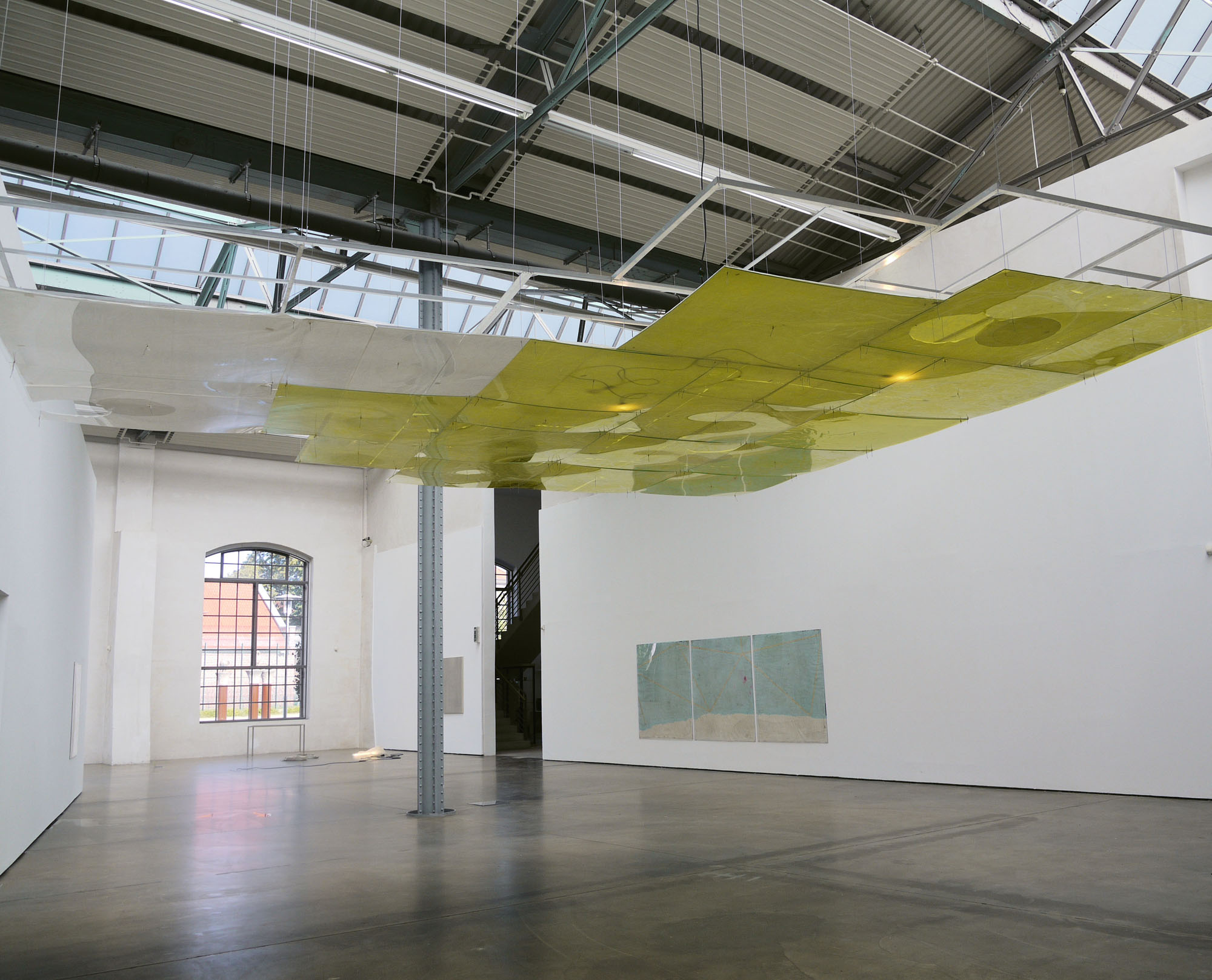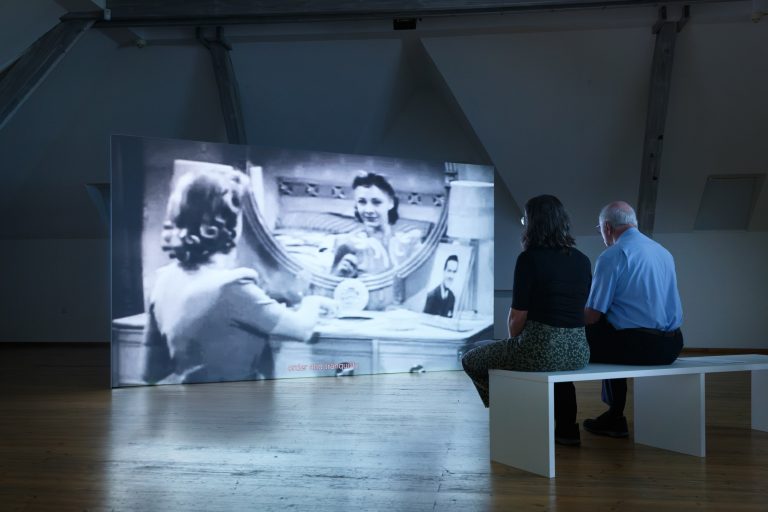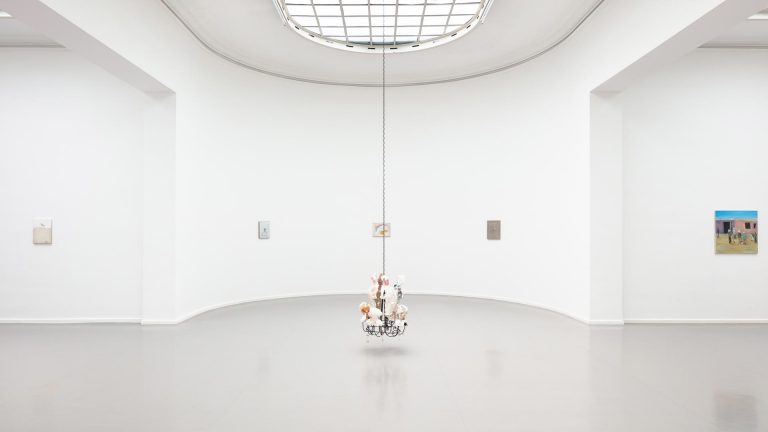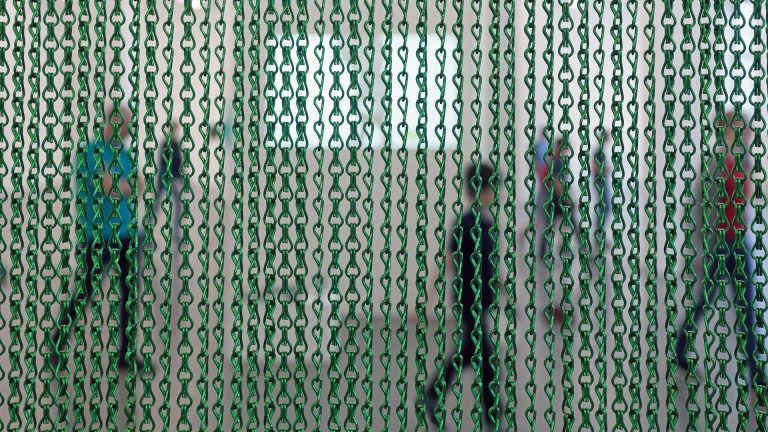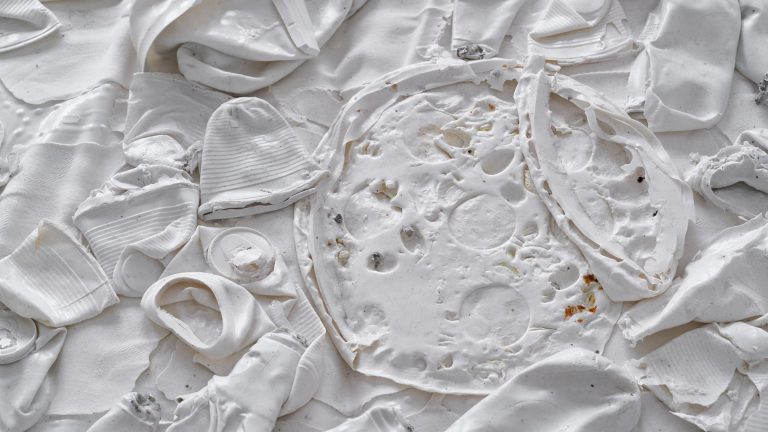Artist: Ian Kiaer
Exhibition title: Endnote, ping
Venue: Kunsthalle Lingen, Lingen, Germany
Date: September 21 – December 22, 2019
Photography: images copyright and courtesy of the artist and Kunsthalle Lingen
Ian Kiaer (born 1971 in London) studied art at the Royal College of Art and the Slade School of Art in London and now works there and in Oxford. His work has been presented in solo exhibitions at the Aspen Art Museum, the Kunstverein Munich, the Galleria d’Arte Moderna e Contemporanea, Turin and the Musée d’Art Moderne de la Ville de Paris. In addition, the artist has participated in group exhibitions at the Mudam Luxembourg, the Tate Modern and Tate Britain in London, the Hammer Museum in Los Angeles, the Hayward Gallery in London, the Manifesta 3 in Ljubljana, the Biennale d’Art contemporain, Rennes, the Biennale de Lyon, the Istanbul Biennale and the Venice and Berlin Biennale.
The exhibition at the Kunsthalle Lingen is entitled “Endnote, ping”. These two words present two figures on which Ian Kiaer has been working for some time. The term “Endnote” indicates something outside the body of the text, something additional and marginal. The final note is inherently fragmentary, each referring autonomously to a particular aspect of the main script. Each final note, although different, is placed in the same relationship to the preceding and following.
“Ping” is the title of a text by Samuel Beckett. The word itself is a sound, suggesting the transition of one form into another, something written into something heard. It is a short word that suggests a single note, that may last for a short time. The text describes a body and a space, but the distinction between the two is not so clear and becomes less clear as the experience of being in a white cube almost dissolves the body through intense light. This dissolution of figure and ground, of space and body requires a different attention.
The exhibition entitled “Endnote, ping” brings together three projects to which Ian Kiaer has regularly returned: Tooth House; Endnote, Tooth; and Endnote, Ping (Marder). The Tooth House refers to a fictitious building that appeared in Friedrich Kiesler’s Magic Architecture. It proposed a biomorphic shelter as a concrete cave, which the architect regarded as a critique of rationalist manifestations of international modernism. The various inflated elements in the exhibition, including a concrete construction created especially for them, can be understood as taking up and further developing Kiesler’s motif in different ways. Endnote, ping (Marder) is an examination of the work of the philosopher Michael Marder, a proponent of “environmental thinking”, who regards plants as living beings that possess their own forms of subjectivity. Marder’s work develops a critique of anthropocentric empathy towards plants and has influenced the recent work of Ian Kiaer.



